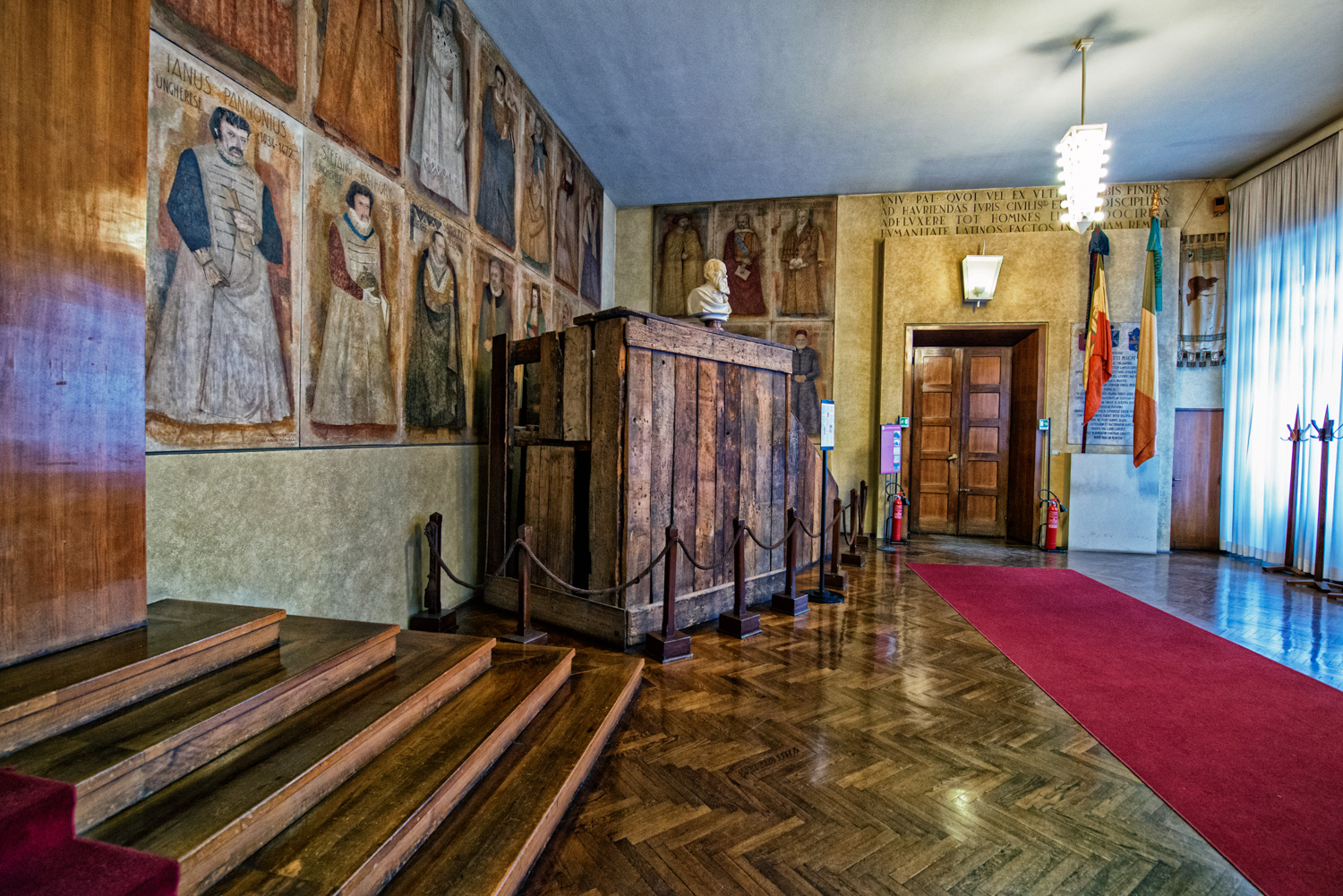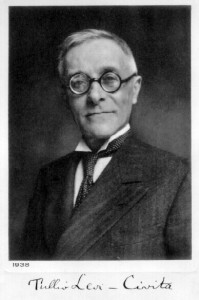 (The original chair of Galileo)
(The original chair of Galileo)
The University of Padova was established in 1222, after a group of students and teachers decided to come here from Bologna. They set up a free body of scholars, who were grouped according to their place of origin into nationes, in which students approved statutes, elected the rettore (rector, or chancellor) and chose their teachers, who were paid with money the students collected. Defending freedom of thought in study and teaching became a distinctive feature which today lives on in the University motto: Universa Universis Patavina Libertas.
The introduction of empirical and experimental methods together with the teaching of theory marked the dawn of a golden age. Indeed, during the 16th and 17th centuries, Padova became a workshop of ideas and the home to figures who changed the cultural and scientific history of humanity. They included Andrea Vesalio, who founded modern anatomy, as well as the astronomer Copernicus, and Galileo, who observed the skies here.
 (Galileo Galilei)
(Galileo Galilei)
Padova also vaunts the world’s first university botanical garden and a permanent anatomical theatre, which was built by Girolamo Fabrici d’Acquapendente. William Harvey, who became famous for describing the circulation of the blood, studied in Padova, and in 1678 Elena Lucrezia Cornaro Piscopia became the first woman in the world to be awarded a university degree.
The fall of the Serenissima Republic of Venice in 1797 marked the beginning of a dark age. Padova fell under the rule of first the French and then the Austrians, passing through Italy’s tumultuous Risorgimento, which also affected the University.
 (The astronomical observatory)
(The astronomical observatory)
Born into an Italian Jewish family in Padua, Levi-Civita was the son of Giacomo Levi-Civita, a lawyer and former senator. He graduated in 1892 from the University of Padua Faculty of Mathematics. In 1894 he earned a teaching diploma after which he was appointed to the Faculty of Science teacher's college in Pavia. In 1898 he was appointed to the Padua Chair of Rational Mechanics where he met and, in 1914, married Libera Trevisani, one of his pupils. He remained in his position at Padua until 1918, when he was appointed to the Chair of Higher Analysis at the University of Rome; in another two years he was appointed to the Chair of Mechanics there.

His textbook on tensor calculus, The Absolute Differential Calculus (originally a set of lecture notes in Italian co-authored with Ricci-Curbastro), remains one of the standard texts more than a century after its first publication, with several translations available. Levi-Civita's work was of extreme importance in the theory of relativity, and he produced a series of papers elegantly treating the problem of a static gravitational field. This topic was discussed in a correspondence between Levi-Civita and Einstein during 1915 - 1917 about the variational formulation of the gravitational field equations and their covariance properties, and the definition of the gravitational energy and the existence of gravitational waves.
 (Landscape of Padova)
(Landscape of Padova)
